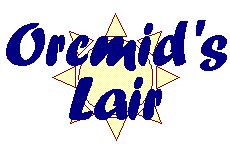
Readings
Computer Science
compsci>
2004-12-13
-07:24 -0800

|
Readings |
|
- see also:
- Readings in Personal Computing
Readings in Software Tools- Readings in Information Processing
- Readings in Software Engineering
- Readings in System Architecture and Design
Readings in Programming Systems and Languages- Readings in Functional Programming Systems (Miser Project)
interface
ActionListener implementation begins on p.86 and
is nowhere addressed that I can find.) That it cost the readers of this
book an introduction to text processing and algorithm design
is unfortunate.http://doi.acm.org/10.1145/361454.361458.http://doi.acm.org/10.1145/321495.321497.
Reprinted in [Ashenhurst1987:
pp.207-218].http://doi.acm.org/10.1145/321062.321063.http://doi.acm.org/10.1145/361604.361612.goto
Statements [1974]WEB [1986]CWEB
[1990]MIX |
You are navigating Orcmid's Lair |
created 2000-07-18-18:06 -0700 (pdt) by orcmid |